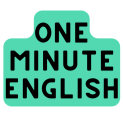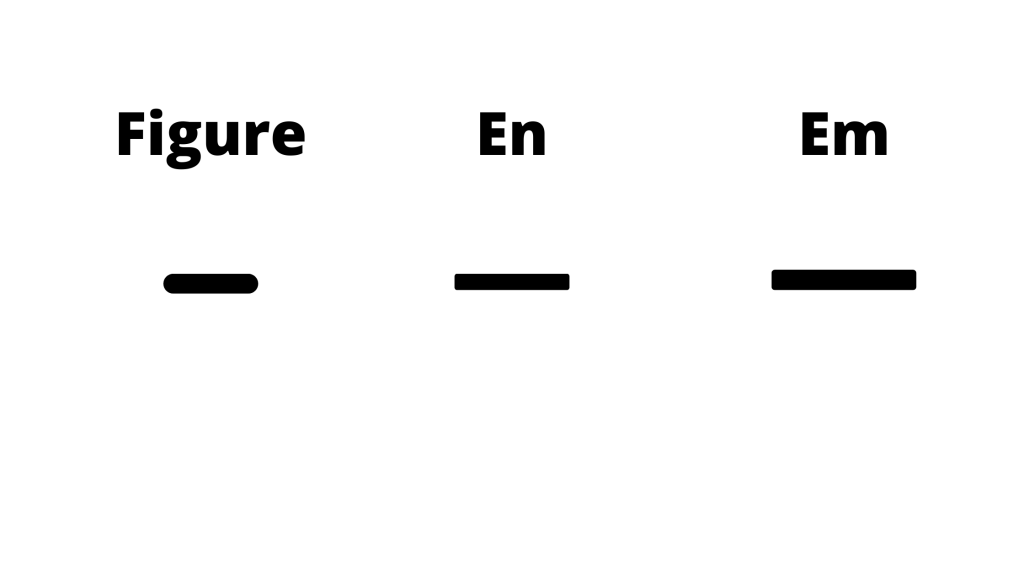Practice English or Spanish with AI here
Most of the time, the different kinds of dashes go undistinguished. This is a shame because knowing when to use each of them can make your writing cleaner and more concise. Three big dash categories are em-dashes, en-dashes, and figure dashes.
Em-dashes are used to break up the extra information in sentences, while en-dashes are used to indicate a range of items, usually numbers. Figure dashes indicate a separation between numbers that isn’t a range, but the mark is frequently used in place of an en-dash when en-dashes aren’t supported by the typeface.
Here’s a quick reference guide to these three different kinds of dashes, with some examples to help you understand each one a bit better.
A Refresher on Dashes
Dashes are the general term used to describe a horizontal punctuation line. Dashes and commas are similar in that they indicate a pause while reading a sentence. The difference is that dashes can indicate various lengths of pauses, while commas always refer to a short pause between ideas.
There are upwards of ten kinds of dash used in the English written language, each serving a unique purpose. Three of the most frequently-questioned kinds are em-dashes, en-dashes, and figure dashes.
Using the Em-Dash
An em-dash(—) is a long dash used to set aside or emphasize certain information. They’re used when commas wouldn’t be enough for clarity, such as when parenthetical (relevant but not fully necessary) information contains a list. They can also be used to indicate an interruption or abrupt detour from the original meaning of a sentence before returning to that original meaning.
Some examples of em-dashes include:
My daughter – she’s a librarian, you know – could tell you exactly where any book would go.
Hyphens, dashes, commas, colons – they’re all punctuation devices with unique functions.
Charles, can you – listen to me – can you take the trash out?
Em-dashes are typically automatically generated by word processing programs when a regular dash is set apart, with spaces on either side, from two words.
One of the most famous frequent users of the em-dash was poet Emily Dickinson, who used it in unconventional ways to emphasize her poetry’s meaning.
Using the En-Dash
An en-dash (–) is roughly half the size of an em-dash and is usually about as wide as a standard digit (a letter or a number). When using it in a sentence, it indicates a range of time or amounts. They’re used in place of announcing pairs such as “from…to” and “between…and,” and serve the same general function.
Some examples include:
The boss has us working 35-40 hours per week.
The information can be found on pages 24-28.
I’ll be out of the office August 12-September 1.
En-dashes are most commonly used for times and dates, as well as to indicate an estimate or average amount range. They’re the “minus sign” on most keyboards.
They’re also commonly used in informal writing to save on characters, such as on social media platforms with character limits like Twitter.
Using a Figure Dash
Figure dashes are the shortest of the dashes, and also one of the least frequently used. They’re used in much the same way that a hyphen is used; they indicate a break in a sequence, usually of numbers.
Figure dashes are commonly used to maintain alignment in columns of information, such as in a table, where long strings of numbers might be confusing or hard to read.
Some examples include:
Your phone number is 555-123-4567.
Her laptop’s serial number was AK3-1254-2387-9.
Figure dashes are used in personal information sequences like social security numbers and phone numbers, and in technical and scientific writing that need to refer to long number sequences such as identification numbers and sample numbers.
Differentiating Dashes
Em-dashes, en-dashes, and figure dashes all serve a vital role in punctuation that, while it may be possible to compensate with other symbols, make sentences significantly clearer and more effective.
They can make your writing easier to understand in any font and can change the entire meaning of it – say, for instance, making it a more effective example – if they’re used correctly.
If you’re confused about which dash to use, consider what you’re intending to say, whether you’re working with regular words or numbers, and whether you’re talking about a range.
As long as you’re asking yourself the right questions, knowing when to use an em-dash, en-dash, and figure dash is easy.
- 10 Words or Phrases “To Make Her Feel Special” - October 16, 2024
- Synonym Generator - September 11, 2024
- [BrutallyHonest] Langua AI Review – Can you learn a language with AI? - April 23, 2024


